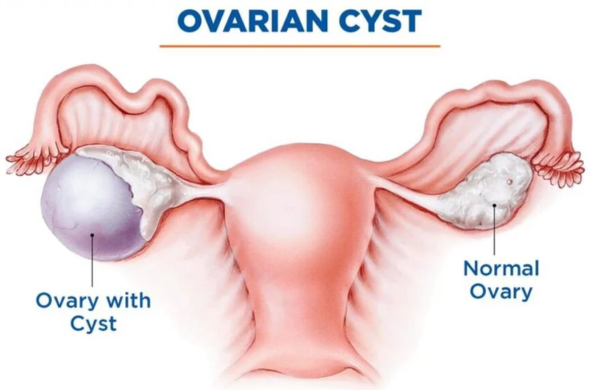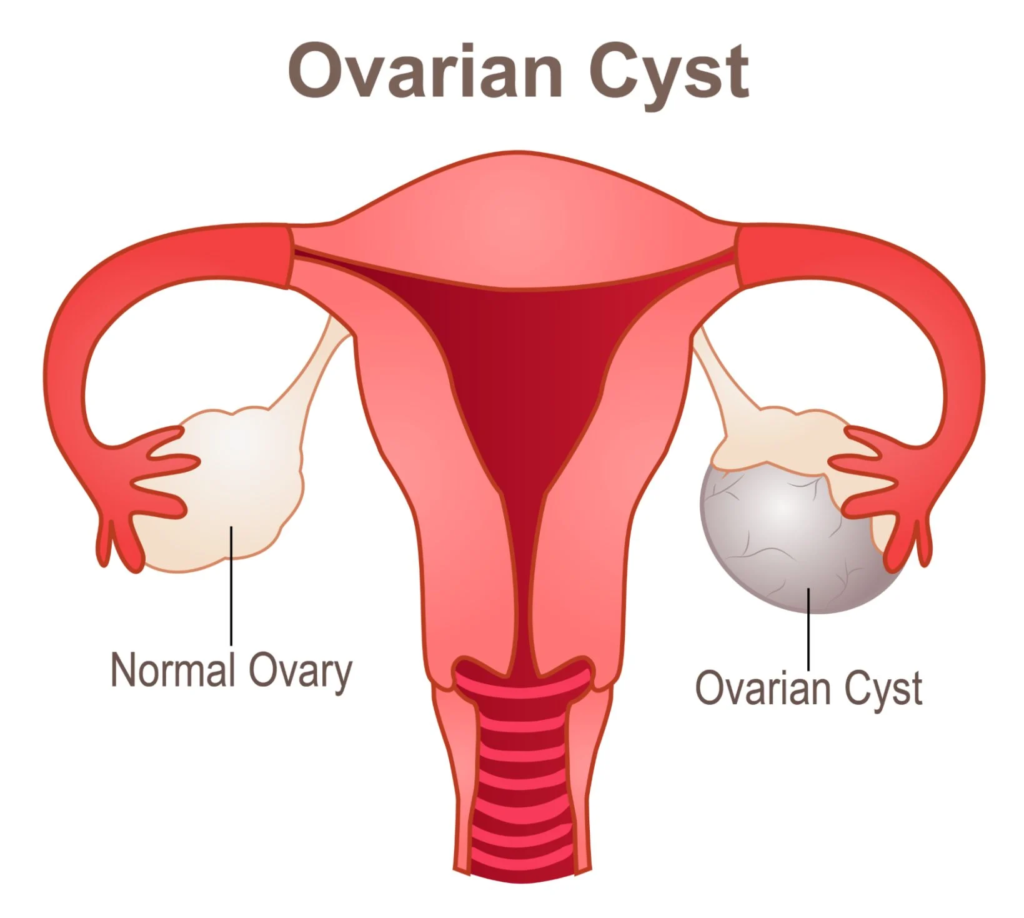
Understanding Laparoscopic Ovarian Cystectomy: A Minimally Invasive Solution for Ovarian Cysts
Laparoscopic ovarian cystectomy is a surgical procedure that is performed for the treatment and removal of ovarian cysts.
What Is an Ovarian Cyst?
Ovarian cysts are sacs filled with fluid or mass and can occur on one or both of the ovaries. These cysts are prevalent and are usually painless and without any symptoms. They can go on their own without any treatment. However, in rare cases, the development of these ovarian cysts can cause complications and require medical attention.

In most cases, ovarian cysts do not cause any symptoms, but if the cyst grows, it can show symptoms such as
- Discomfort in the pelvis
When a person has an ovarian cyst, they might experience constant or intermittent pain that can range from mild to severe.
- Irregular periods
An ovarian cyst can lead to hormonal imbalance and also undesirable changes in the menstrual cycle.
- Painful intercourse
A person with an ovarian cyst can experience discomfort during sexual intercourse.
Why Is an Ovarian Cystectomy Done?
Ovarian cystectomy is a procedure that can treat patients dealing with one or more ovarian cysts. The treatment of ovarian cysts is required when those fluid-filled sacs become larger and cause pain, or if the cysts don’t go away on their own. There are mainly two ways that are used for removing ovarian cysts, which include open cystectomy (laparotomy) and laparoscopic ovarian cystectomy.

What Is a Laparoscopic Ovarian Cystectomy?
Laparoscopic ovarian cystectomy is a surgical procedure that is performed for the treatment and removal of ovarian cysts. It is a minimally invasive technique, which means this process incurs fewer incisions and pain. Under this procedure, non-cancerous cysts that are more than 7cm with normal tumour marker levels are targeted and removed.
This procedure is usually carried out under general anaesthesia, and most people can go home the following day.
What Happens During the Procedure?
Laparoscopic ovarian cystectomy is a keyhole or minimally invasive surgery. This surgical intervention introduces a small cut in the tummy through which gas is inflamed into the stomach, and then the gas is blown down the pelvis to access the ovaries. Then, 2 or 3 small incisions are made in the abdominal wall, each about one to a half centimetre. Trocars (thin, hollow tubes) are inserted through these incisions to provide access to surgical instruments and a laparoscope.

A Laparoscope is a thin tube-shaped microscope with a light at the end. Surgeons use this medical instrument to get clear access to the internal organs.
The main goal of ovarian cystectomy is to remove the cyst wall with its contents while preserving the original ovarian tissue as much as possible.
Benefits of Laparoscopic Ovarian Cystectomy
Laparoscopic ovarian cystectomy has several benefits in comparison to traditional cystectomy, which includes the following:
- Minimally invasive
Laparoscopic surgery is minimally invasive, which refers to smaller incisions that cause less damage to the surrounding tissue and lower the risk of infection.

- Less post-operative pain
Through laparoscopic ovarian cystectomy, patients experience less post-operative pain, which helps them recover faster.
- Less blood loss
As the process is minimally invasive, smaller incisions are made to remove the cyst. This procedure involves less blood loss than open surgery and also reduces certain risks associated with it.
- Shorter hospital stay
Because it is a keyhole technique, patients who undergo this surgery usually go home a day or two after the surgery. Hence, it can help them in their recovery, and patients can often return to their normal day-to-day activities soon after the procedure.
It is important to consult your healthcare provider and talk about your surgical options. You can also discuss the potential benefits and risks associated with the procedures.
CONCLUSION
An ovarian cyst is a common condition that usually does not lead to any symptoms. But when it ruptures, it can cause several discomforts, such as abdominal pain and irregular periods, which need medical guidance.
Laparoscopic ovarian cystectomy comes with several advantages in comparison to traditional surgeries, like less post-operative pain, minimal scarring, less blood loss, and a quicker recovery.
If you’re also diagnosed with ovarian cyst(s), consult your gynaecologist and discuss your treatment options, which may depend on the size, type, and location of the cyst.